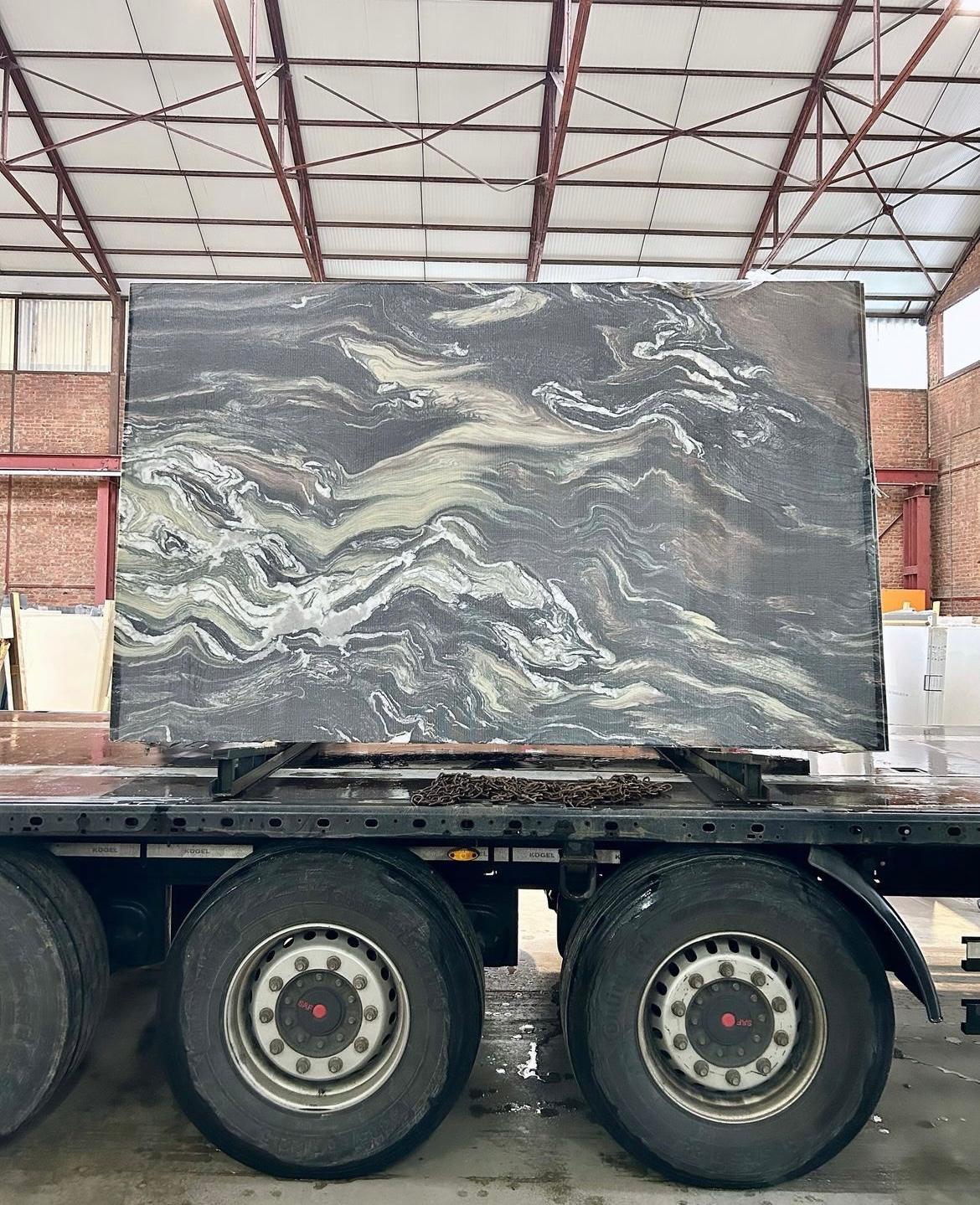materials and care
Our unique stones enhance your interior

Materials and care
-
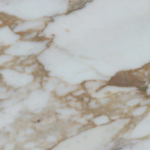
Marble
natural stone"Everything is already in the marble. It is up to the sculptor to free it." Jean Cocteau
Cocteau's vision suggests that marble already holds forms and possibilities, just waiting to be revealed by the artist. A creative process in which the fabricator collaborates with the material to bring his ideas to life.
Marble, a noble and immutable material, exudes perfection and purity. For Michelangelo, it was a living material, able to reveal the forms hidden witin the rough stone.
Marble is much more than just a stone ; it is poetry frozen in stone, a paean to human creativity and timeless beauty.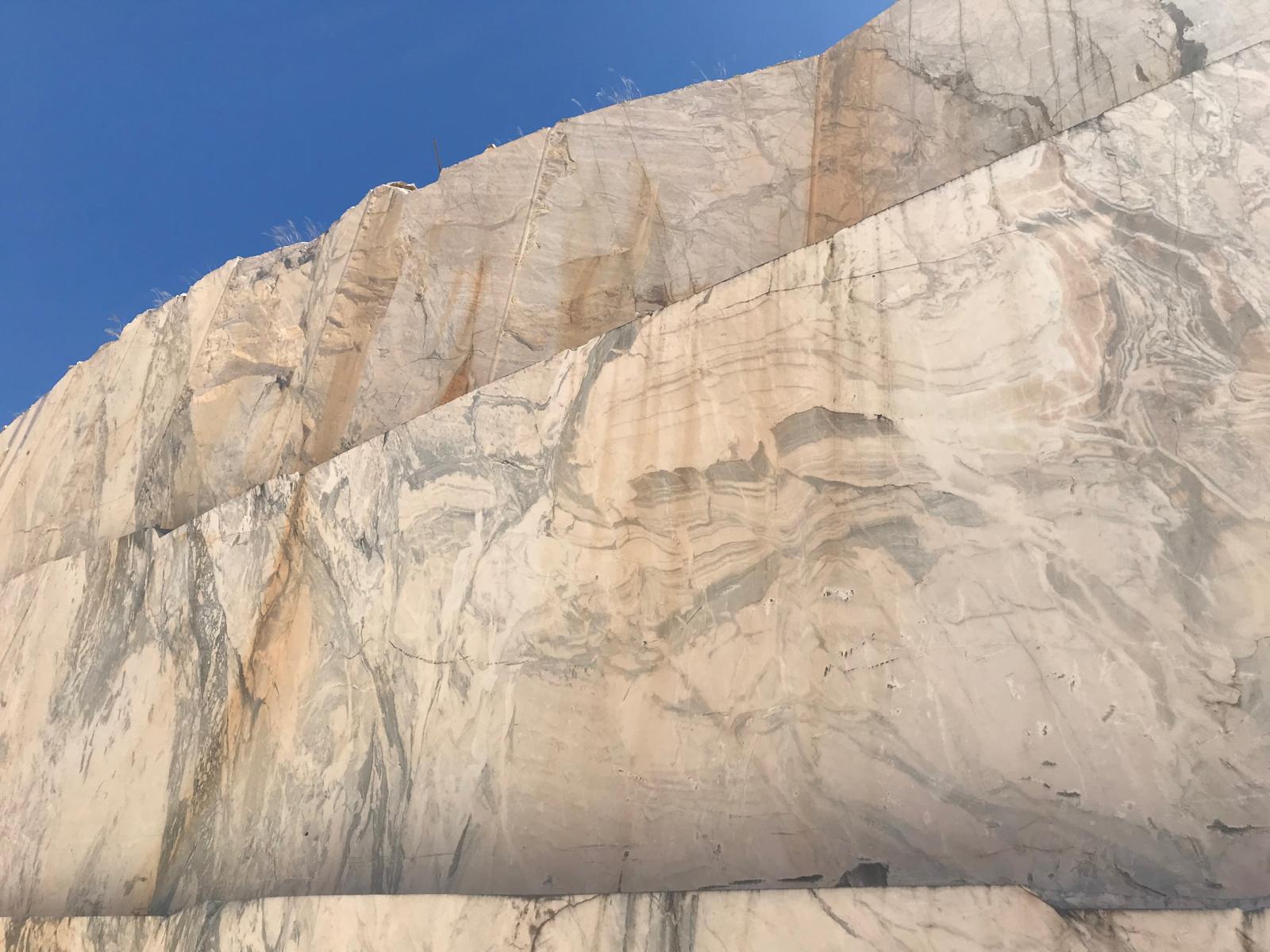 Pros and cons
Pros and consMarble includes any limestone rock that develops a significant patina. Choosing marble comes down to emphasising the authenticity of a living stone that evolves over time.
Marble can be sedimentary, i.e. the result of an accumulation of detrital and residual elements, or metamorphic, i.e. pre-existing rocks that have undergone metamorphosis under the influence of pressure and/or temperature.
Calcite is the main mineral in marble, giving it its chalky character. Some marbles consist of dolomite, a harder mineral than calcite, allowing other applications.
Care- + Natural stone
- + Wide colour range
- + UV-resistant
- + Shockproof
- + Heat resistant (but susceptible to thermal shock)
- - Does not tolerate acids
- - Significantly high porosity
- - Scratches easily
- Clean with clear water or natural pH-neutral soap using a microfiber cloth or sponge and warm water. Rinse well with warm water and dry.
- Do not use abrasive surfaces to clean : they scratch or scuff easily.
- Do not use degreasing products based on vinegar, lemon or washing-up liquid: marble consists of limestone and reacts to acids.
-

Quartzite
natural stoneHidden under the Earth's mantle for millions of years, this stone reveals the subtlest nuances under the caress of the sun. Its changing reflections capture the imagination, inviting quiet contemplation of the beauty of the natural world and its myriad colours.
With their unchanging brilliance, quartzites evoke the silent resilience of the elements and symbolise eternal beauty.
 Pros and cons
Pros and consOpting for quartzite is a choice for durability and efficiency, as well as authenticity. Quartzite is a metamorphic rock formed from quartz-rich sandstone that has undergone chemical metamorphosis in the earth’s crust under the effect of pressure and temperature. It is composed mainly of fused grains of quartz, which are themselves composed of silicon oxide molecules, giving it great hardness and strength.
Care- + Wide range of colours
- + Very hard
- + Resistant to household acids
- + Scratch resistant
- + Heat resistant (but susceptible to thermal shock)
- + UV-resistant
- - Variable porosity depending on the variety
- - Do not use ceramic knives, as they can scratch the surface
Quartzite can be cleaned in the same way as granite:
- Wash with slightly diluted white vinegar, rinse with hot water and dry.
- Soap with white Cif with a microfibre or the green side of a sponge and hot water. Rinse well with hot water and dry.
- DO NOT use washing-up liquid as this will make the surface greasy.
-

Granite
natural stoneGranite, with its deep tones and rough textures, evokes resilience and solidity. Granite has an unshakable strength that defies the test of time. Its imposing masses seem to bear witness to the raw power of nature, bravely resisting the elements that try to change it.
In the daylight, granite reveals its subtle nuances, with mineral glints sparkling in its robust mantle. Ancient history is etched into its layers, a silent testament to the immensity of time and the immutability of nature. Pros and cons
Pros and consGranite is a magmatic rock formed by the slow cooling of magma deep underground. Commercially, granite includes all types of granite and gabbro. These 2 materials are not composed of limestone, but mainly quartz minerals, feldspars and micas for granites, and pyroxene and feldspars for gabbros. Gabbros are darker in colour, whereas granites look lighter and speckled.
Care- + Very hard
- + Resistant to household acids
- + Scratch resistant
- + Heat-resistant (but warning of heat shock)
- + UV-resistant
- - Porosity varies according to the variety (darker = less porous)
- - Do not use ceramic knives as they can scratch the surface.
- Clean with slightly diluted white vinegar, rinse with hot water and dry.
- Lather with white Cif with a microfibre cloth or the green side of a sponge and hot water, rinse well with hot water, dry.
- DO NOT use washing-up liquid as this will make the surface greasy.
-

Quartz composite
manufactured productA harmonious blend of nature and technology, quartz composite offers a symphony of colours and textures. It encompasses the strength of stone and the softness of time, offering a safe haven where human creativity dances with the elements of nature.
 Pros and cons
Pros and consQuartz composite is a synthetic material consisting mainly of particles of natural quartz mixed with polymer resins and other additives. It is known for its durability, resistance to stains and scratches, and variety of colours and patterns. This material is widely used in kitchens and bathrooms, for worktops, floors and wall coverings due to its ease of maintenance and aesthetic versatility.
Care- + Hard
- + Non porous
- + Not sensitive to house acids
- + Wide colour range
- - Does not resist heat due to resin binder
- - No ceramic blades because they can scratch the surface
- - UV-sensitive due to resin binder
- Clean with slightly diluted white vinegar, rinse with hot water and dry.
- Lather with white Cif with a microfibre cloth or the green side of a sponge and hot water, rinse well with hot water, dry.
- Use the green side of the sponge for matt finishes and the soft side for polished or softened finishes.
- DO NOT use washing-up liquid as this will make the surface greasy.
Prohibited products: oven degreasers, unblockers, hair products, elements with a PH of more than 10 (prolonged contact), Acetone (prolonged contact).
-

Ceramic
manufactured productCeramics is the dance of fire and matter, where clay, modest and flexible, becomes immortal. It's a silent alchemy, a metamorphosis where the ordinary becomes precious and eternal.
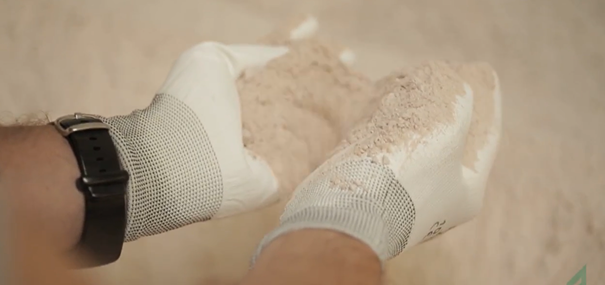 Pros and cons
Pros and consCeramics are a mixture of clay and silica, pressed and fired at very high temperatures.
Care- + Wide colour range
- + Very hard
- + Resistant to household acids
- + Heat-resistant
- + UV-resistant
- + Non-porous
- - Sensitive to impacts, especially at the edges of the worktop
- - Ceramic knives can scratch the surface
- Clean with slightly diluted white vinegar, rinse with warm water and dry.
- Soap with white Cif with a microfibre cloth or sponge and warm water. Rinse well with warm water and dry.
- Use the green side of the sponge for matt and textured finishes, and the soft side for polished or softened finishes.
- DO NOT use washing-up liquid, as this will make the surface greasy.
-
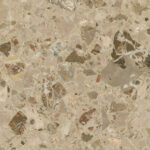
Marble composite
manufactured productMarble composite is more than just a building material: it embodies a commitment to sustainability and respect for the environment. Produced by recycling natural marble waste from quarries, it transforms what might otherwise would have been lost into a valuable resource.
 Pros and cons
Pros and consQuarry waste is transformed into aggregates of various sizes and shapes, which are then mixed with natural pigments and resins, sometimes combined with other raw materials such as sand and glass, to create manufactured products offering exceptional performance, as well as great strength and durability.
Care- + Wide colour range
- + Hard
- + Shockproof
- - Does not resist heat due to resin binder
- - Does not tolerate acids
- - Scratches easily
- - UV-sensitive due to resin binder
Marble composite can be cleaned in the same way as marble:
- Clean with clear water or natural pH-neutral soap using a microfiber cloth or sponge and warm water. Rinse well with warm water and dry.
- Do not use abrasive surfaces to clean : they scratch or scuff easily.
- Do not use degreasing products based on vinegar, lemon or washing-up liquid: marble composite consists of limestone and reacts to acids.
Material Comparison
Depending on the characteristics that are important to you, this table can help you to choose one or other material.

a question about our materials?
Consult our FAQ or contact us by phone.
A question regarding our materials, maintenance or even availability?
Discover our FAQ or contact us by phone. We will be happy to answer you.






